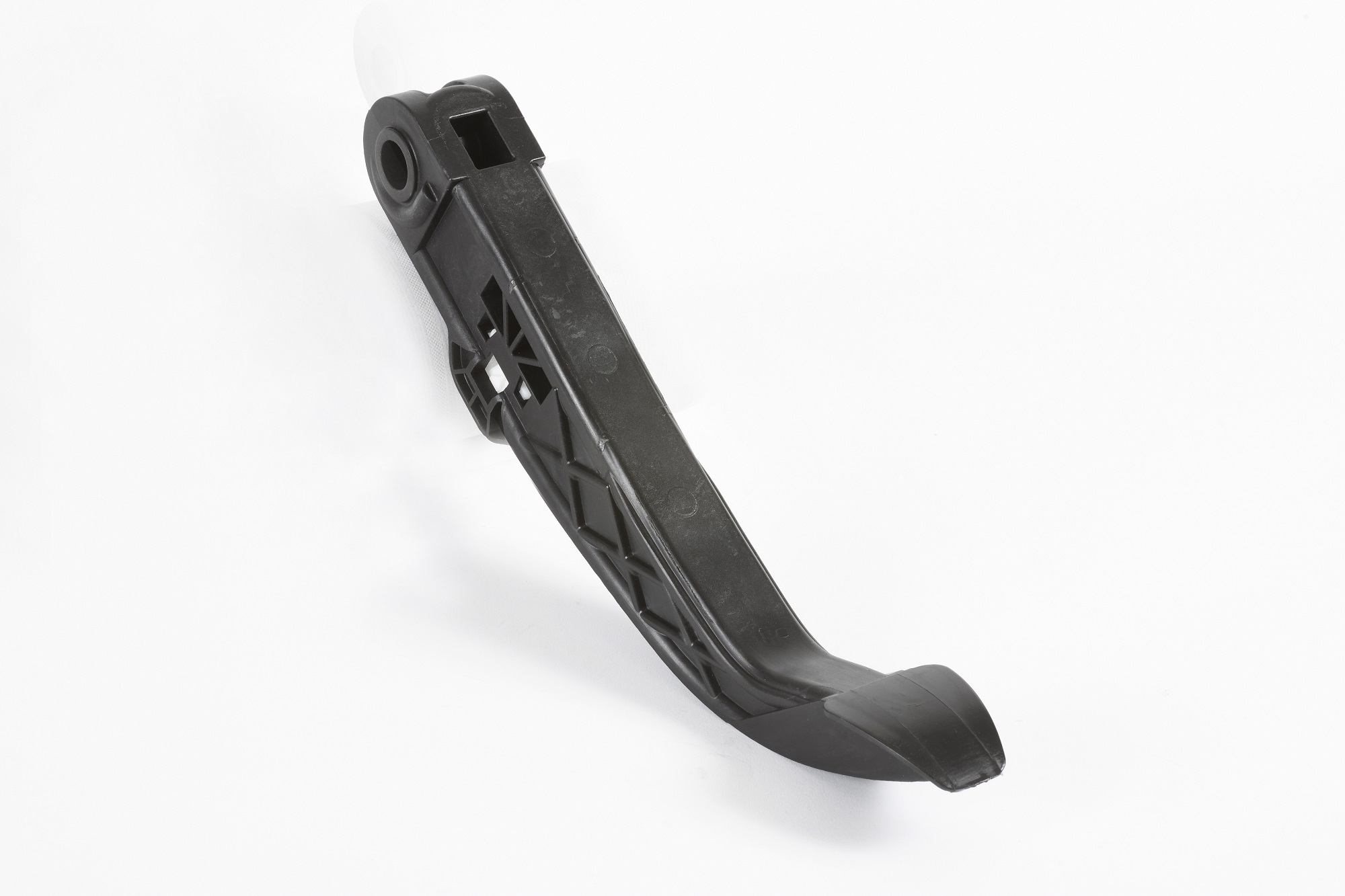
Solvay Performance Polyamides says that its new Technyl Max polyamide 6.6 (PA6.6) material has been chosen to make an all-plastic brake pedal.
The ‘skeleton’ pedal was developed by Carbody, which focuses on safety and sealing products for the automotive industry. It features a rod-shaped composite structure over-molded with 60% glass-filled composite.
According to Solvay, the pedal could replace conventional steel design with a lightweight hybrid structure. It reportedly has superior fracture resistance under loads up to 3.000 N and can maintain its operational safety beyond that limit. Generally, the average force applied in case of emergency brake is around 500 N, the company said.
‘Automotive OEMs and Tiers are increasingly looking for high rigidity materials to substitute a range of metal components for the lightweighting of new energy vehicles,’ said Gérald Durski, marketing director.’
Solvay says that material is also suitable for semi-structural components such as transmission and motor mount cross beams, air shutter grills and seat structures, and its low density has weight savings over typical die-casting metals at comparable tensile strength, making it suitable for electric vehicles (EVs) which require greater rigidity and fatigue resistance due to higher frequencies.
This story uses material from Solvay, with editorial changes made by Materials Today. The views expressed in this article do not necessarily represent those of Elsevier.





